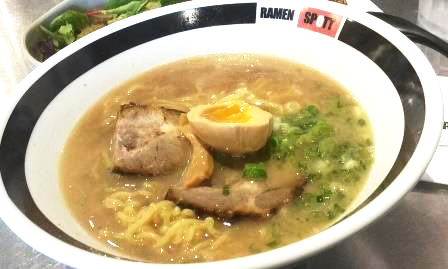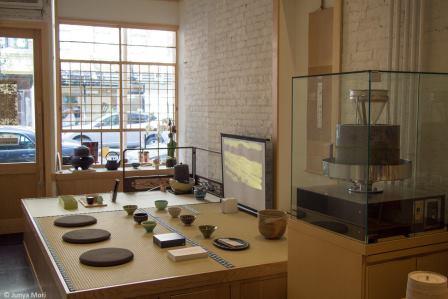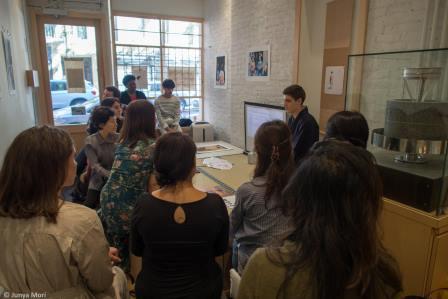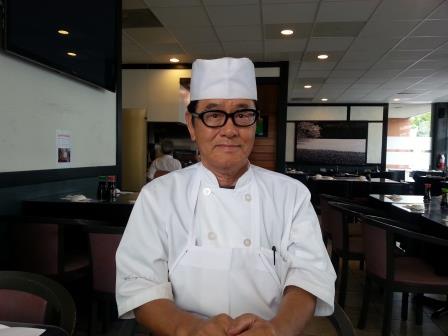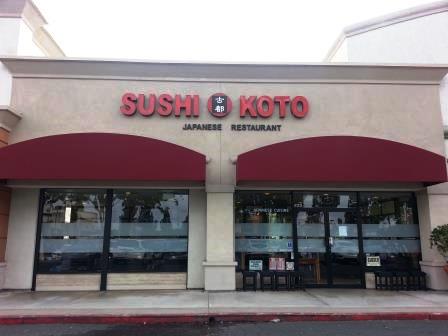Fermented foods attract attention due to health-consciousness boom
By Elli Sekine
“AEDAN”’ tent shop in the Saturday Farmer’s Market held in the very popular Ferry Building in San Francisco, which sells fermented foods such as miso and koji that are not sold at any other shops, is attracting attention. “Miso” and “Koji”, which are the typical products in San Francisco’s unprecedented fermented food boom, have been adapted in menus by America’s top chefs. Lately, you even see the word “Koji” in some restaurant menus. Like setting fire on such a boom, Aedan Fermented Foods, a manufacturer of all hand-made miso and koji-- indispensable ingredients from ancient Japan-- is creating a movement.
The founder, Mariko Gledy, launched this business initially to donate the profit from the sales of hand-made miso to her friends to 2011 Great East Japan Earthquake victims, thinking what she could do to help from the US. “Before that time, I was making miso for my own family. I got an idea of selling it to my friends so I can donate the money from the sales,” says Mariko. She started to make miso at home to inherit a Japanese tradition to her children. “I felt the great power of miso once again when I learned that you can basically survive for a few days with only miso and water.” As she was studying further on miso and koji for the future business opportunity, she felt a strong hope for conveying this wisdom of Japan to as many people as possible, especially to American children who are responsible for the next generation. This hope of her is reflected on the company name, Aedan (wisdom transmission), and has also become the The founder, Mariko Gledy, launched this business initially to donate the profit from the sales of hand-made miso to her friends for the 2011 Great East Japan Earthquake victims, thinking of what she could do to help from the US. “Before that time, I was making miso for my own family. I got the idea of selling it to my friends so I can donate the money from the sales,” says Mariko. She started to make miso at home to pass on a Japanese tradition to her children. “I felt the great power of miso once again when I learned that you can basically survive for a few days with only miso and water.” As she was studying further about miso and koji for the future business opportunity, she felt a strong hope for conveying this wisdom of Japan to as many people as possible, especially to American children who are responsible for the next generation. This hope of hers is reflected on the company name, Aedan (wisdom transmission), and has also become the company mission as well.
In the following year, 2012, the company started a full-fledged sales activity by joining an incubation kitchen, “La Cocina”, which supports female and minorities to start businesses. From then on, the variety of merchandise production and the business structure continued to expand by receiving business advice and support from La Concina. The company steadily gained more recognition through catering of cuisines using house-made fermented condiments, and workshops, lectures, etc.
In 2016, she founded an LLC, and in the same year, the company acquired a regular presence in the Saturday Ferry Building Farmer’s Market, which every small business owner in the food industry dreams of. In the tent of the Farmer’s Market, miso soup, amazake ($3 each), and Hakkoh Bento (Fermented lunch box, $15) using miso and koji, etc. are sold in order to let people who do not yet know about miso learn about its attractive benefits. Aedan manufactures and sells 4 kinds of miso, shiokoji, amazake-based marinade called Sagohachi, and amazake, all made with organic soy beans and/or rice ($10 each). They also sell chickpea miso made uniquely with chickpeas instead of soy beans. Their locally-made miso goes through no fermentation-stopping process such as heating, and thus the koji enzyme stays alive, and helps create a deeper taste as it ages. The amazake completed by the Vitamix machine is so smooth, creamy and rich, and gaining popularity for its uniquely profound taste. Not only do they sell, but they also carry out to let people know the delicious ways to eat miso and koji. The Shiokoji kit ($20) that contains mixed raw koji and salt, is popular among travelers because it is easy to carry around under natural temperatures.
Japanese cuisine has well settled into the local scenes lately, and more and more Americans even know what koji or shiokoji are, not to mention what miso is. Helped by such a background, wholesale orders are increasing from long-established San Franciscan grocers such as Rainbow Grocery and Bi-Rite Market, and also from restaurants. The catering menu that includes omelet cooked with amazake, tofu dengaku marinated in shiokoji, koji pickles, etc. is well received, and orders have also increased year after year for its simple yet deep tasting selection of items. Their Washoku Lunch menu which is gentle to your body, is also becoming an important part even for many Americans.
Mariko continues, “My goal is to have everybody make miso at home. Different miso for each family!” In order to achieve this goal of miso making and eating at every household, she is diligently putting efforts in miso making workshops and classes called “Terakoya Aedan”. She is expanding such activities to teach American citizens Japanese traditional food cultures by also having lectures at some museums and health-conscious specialty stores.
The number of fans of Aedan Fermented Foods has grown in the past 6 years due to its diligent efforts in conveying the good benefits of miso and koji. Now Mariko is planning to take a new step. At this point, there is no store fixture, but she is hoping to open a “Miso Café”, which would be a store with a café space.
There, she wants not only to sell miso and koji and serve miso soup and dishes, but also to have a space for miso-making workshops and cooking classes. Such days when you can enjoy body-friendly foods at a San Francisco’s very first fermented foods specialty café may come soon.
健康志向ブームで注目を浴びる発酵食品
サンフランシスコ最大のファーマーズマーケット、フェリープラザの土曜日に出店している味噌や麹などの発酵食品を売る「Aedan」が注目を集めている。
この2、3 年の発酵食品ブームを背景に、家庭の主婦からシェフまで買付が急増し、最近ではレストランのメニューで「koji」の字を時々見かける。日本古来から欠かせないものであった伝統の発酵食品を全て手作りで生産する会社、Aedan Fermented Foods ( 叡伝) が、ムーブメントを起こしている。
創設者の摩利子グレディ氏は、2011年の東日本大震災時、被災地のためにアメリカで何が出来るかを考えた時、味噌を作って、その売り上げを寄付したいとこのビジネスを立ち上げた。「それまでは家族の為に作っていました。その味噌を友人に買ってもらって、売り上げを寄付することを思いついたんです」と摩利子氏。味噌を家で作り始めたきっかけは、アメリカでも子供達に日本の伝統食文化を継承したいという思いからだ。「基本的に味噌と水があれば人間は数日生きていけることを知り、味噌の力のすごさを改めて感じたんです」。販売するにあたって味噌や麹についてさらに探求するうち、この日本の叡智を次の世代を担うアメリカの子供達、もっと多くの人々に伝えていきたいという気持ちが強くなったという。その想いは社名の「叡伝」に表され、会社のミッションになっている。
翌2012 年には、女性やマイノリティの起業を支援するインキュベーションキッチン、「ラ・コシーナ」に加わり、本格的な販売へと乗り出した。そこからラ・コシーナのビジネスアドバイスとサポートを受けながら商品の生産の種類、ビジネス形態も拡張した。例えば自家製発酵調味料を使った料理のケータリングや、ワークショップ、レクチャーなどを通じて地道に認知度を上げてきた。
2016年にはLLCを設立した。同年、食関係のスモールビジネスのオーナーなら誰でもあこがれる、土曜日のフェリービルディングファーマーズマーケットのレギュラー出店を獲得した。このテントでは、まだ味噌に馴染みがない人たちにもその魅力を伝えるため、味噌汁や甘酒(1杯$3)、味噌や塩麹などを使った発酵弁当($15) なども販売している。現在叡伝ではオーガニックの大豆と米を使い4種類の味噌に塩麹、Sagohachi という甘酒ベースの漬床や甘酒(各$10)を製造販売している。ユニークなものでは大豆の代わりにひよこ豆を使ったChickpea Miso がある。地元で作っているため、加熱処理など発酵を止める処理をしていない味噌は、麹の酵素が生きており、熟成が進むほどに深い味わいになる。バイタミックスでなめらかに仕上げられた甘酒はクリーミーで濃厚と評判がよい。Aedan では、売る為だけではなく、味噌と麹の美味しい食べ方を人々に伝えるのが信条だ。
近年では日本食人気が定着し、味噌はもちろん、麹の認知度がアメリカ人に広がり、レインボーグローサリーやバイライトマーケットなど、サンフランシスコの老舗食料品店、レストラン、ケータリングの注文も増えている。年々増えているケータリングの内容は、甘酒を使った卵焼きや塩麹に漬け込んだ豆腐の田楽、麹のピクルスなどシンプルだが奥深い味わいのメニューが好評だ。体に優しい和食ランチはアメリカ人にとっても貴重な存在になっている。
さらに摩利子氏は、「目標はみんなに家で味噌を手作りしてもらうこと。一家に一味噌!」と、人々にそれぞれの家で味噌を仕込み使えるよう、味噌作りのワークショップ、「寺子屋叡伝」にも力を入れている。また、美術館や健康思考のスペシャリティストアに出向き講義も行うなど、活動を広げながら日本の伝統的食文化をアメリカ市民に教導している。
6 年かけて地道に味噌と麹の魅力を伝えてきた「叡伝」にはファンも増え、同司は次のステップをもくろんでいる。現在のところまだ固定店舗はないが、今後の展望はカフェを併設した“味噌カフェ” をオープンすることだという。味噌や麹の販売はもちろん、味噌汁や料理を提供するのみでなく、味噌作りワークショップ、料理教室も開催できるスペースを備えたいという。サンフランシスコ初の発酵食品スペシャリティーカフェで体に優しい食事を楽しめる日も近いかもしれない。
Aedan Fermented Foods: http://aedansf.com/
“AEDAN”’ tent shop in the Saturday Farmer’s Market held in the very popular Ferry Building in San Francisco, which sells fermented foods such as miso and koji that are not sold at any other shops, is attracting attention. “Miso” and “Koji”, which are the typical products in San Francisco’s unprecedented fermented food boom, have been adapted in menus by America’s top chefs. Lately, you even see the word “Koji” in some restaurant menus. Like setting fire on such a boom, Aedan Fermented Foods, a manufacturer of all hand-made miso and koji-- indispensable ingredients from ancient Japan-- is creating a movement.
The founder, Mariko Gledy, launched this business initially to donate the profit from the sales of hand-made miso to her friends to 2011 Great East Japan Earthquake victims, thinking what she could do to help from the US. “Before that time, I was making miso for my own family. I got an idea of selling it to my friends so I can donate the money from the sales,” says Mariko. She started to make miso at home to inherit a Japanese tradition to her children. “I felt the great power of miso once again when I learned that you can basically survive for a few days with only miso and water.” As she was studying further on miso and koji for the future business opportunity, she felt a strong hope for conveying this wisdom of Japan to as many people as possible, especially to American children who are responsible for the next generation. This hope of her is reflected on the company name, Aedan (wisdom transmission), and has also become the The founder, Mariko Gledy, launched this business initially to donate the profit from the sales of hand-made miso to her friends for the 2011 Great East Japan Earthquake victims, thinking of what she could do to help from the US. “Before that time, I was making miso for my own family. I got the idea of selling it to my friends so I can donate the money from the sales,” says Mariko. She started to make miso at home to pass on a Japanese tradition to her children. “I felt the great power of miso once again when I learned that you can basically survive for a few days with only miso and water.” As she was studying further about miso and koji for the future business opportunity, she felt a strong hope for conveying this wisdom of Japan to as many people as possible, especially to American children who are responsible for the next generation. This hope of hers is reflected on the company name, Aedan (wisdom transmission), and has also become the company mission as well.
In the following year, 2012, the company started a full-fledged sales activity by joining an incubation kitchen, “La Cocina”, which supports female and minorities to start businesses. From then on, the variety of merchandise production and the business structure continued to expand by receiving business advice and support from La Concina. The company steadily gained more recognition through catering of cuisines using house-made fermented condiments, and workshops, lectures, etc.
In 2016, she founded an LLC, and in the same year, the company acquired a regular presence in the Saturday Ferry Building Farmer’s Market, which every small business owner in the food industry dreams of. In the tent of the Farmer’s Market, miso soup, amazake ($3 each), and Hakkoh Bento (Fermented lunch box, $15) using miso and koji, etc. are sold in order to let people who do not yet know about miso learn about its attractive benefits. Aedan manufactures and sells 4 kinds of miso, shiokoji, amazake-based marinade called Sagohachi, and amazake, all made with organic soy beans and/or rice ($10 each). They also sell chickpea miso made uniquely with chickpeas instead of soy beans. Their locally-made miso goes through no fermentation-stopping process such as heating, and thus the koji enzyme stays alive, and helps create a deeper taste as it ages. The amazake completed by the Vitamix machine is so smooth, creamy and rich, and gaining popularity for its uniquely profound taste. Not only do they sell, but they also carry out to let people know the delicious ways to eat miso and koji. The Shiokoji kit ($20) that contains mixed raw koji and salt, is popular among travelers because it is easy to carry around under natural temperatures.
Japanese cuisine has well settled into the local scenes lately, and more and more Americans even know what koji or shiokoji are, not to mention what miso is. Helped by such a background, wholesale orders are increasing from long-established San Franciscan grocers such as Rainbow Grocery and Bi-Rite Market, and also from restaurants. The catering menu that includes omelet cooked with amazake, tofu dengaku marinated in shiokoji, koji pickles, etc. is well received, and orders have also increased year after year for its simple yet deep tasting selection of items. Their Washoku Lunch menu which is gentle to your body, is also becoming an important part even for many Americans.
Mariko continues, “My goal is to have everybody make miso at home. Different miso for each family!” In order to achieve this goal of miso making and eating at every household, she is diligently putting efforts in miso making workshops and classes called “Terakoya Aedan”. She is expanding such activities to teach American citizens Japanese traditional food cultures by also having lectures at some museums and health-conscious specialty stores.
The number of fans of Aedan Fermented Foods has grown in the past 6 years due to its diligent efforts in conveying the good benefits of miso and koji. Now Mariko is planning to take a new step. At this point, there is no store fixture, but she is hoping to open a “Miso Café”, which would be a store with a café space.
There, she wants not only to sell miso and koji and serve miso soup and dishes, but also to have a space for miso-making workshops and cooking classes. Such days when you can enjoy body-friendly foods at a San Francisco’s very first fermented foods specialty café may come soon.
健康志向ブームで注目を浴びる発酵食品
サンフランシスコ最大のファーマーズマーケット、フェリープラザの土曜日に出店している味噌や麹などの発酵食品を売る「Aedan」が注目を集めている。
この2、3 年の発酵食品ブームを背景に、家庭の主婦からシェフまで買付が急増し、最近ではレストランのメニューで「koji」の字を時々見かける。日本古来から欠かせないものであった伝統の発酵食品を全て手作りで生産する会社、Aedan Fermented Foods ( 叡伝) が、ムーブメントを起こしている。
創設者の摩利子グレディ氏は、2011年の東日本大震災時、被災地のためにアメリカで何が出来るかを考えた時、味噌を作って、その売り上げを寄付したいとこのビジネスを立ち上げた。「それまでは家族の為に作っていました。その味噌を友人に買ってもらって、売り上げを寄付することを思いついたんです」と摩利子氏。味噌を家で作り始めたきっかけは、アメリカでも子供達に日本の伝統食文化を継承したいという思いからだ。「基本的に味噌と水があれば人間は数日生きていけることを知り、味噌の力のすごさを改めて感じたんです」。販売するにあたって味噌や麹についてさらに探求するうち、この日本の叡智を次の世代を担うアメリカの子供達、もっと多くの人々に伝えていきたいという気持ちが強くなったという。その想いは社名の「叡伝」に表され、会社のミッションになっている。
翌2012 年には、女性やマイノリティの起業を支援するインキュベーションキッチン、「ラ・コシーナ」に加わり、本格的な販売へと乗り出した。そこからラ・コシーナのビジネスアドバイスとサポートを受けながら商品の生産の種類、ビジネス形態も拡張した。例えば自家製発酵調味料を使った料理のケータリングや、ワークショップ、レクチャーなどを通じて地道に認知度を上げてきた。
2016年にはLLCを設立した。同年、食関係のスモールビジネスのオーナーなら誰でもあこがれる、土曜日のフェリービルディングファーマーズマーケットのレギュラー出店を獲得した。このテントでは、まだ味噌に馴染みがない人たちにもその魅力を伝えるため、味噌汁や甘酒(1杯$3)、味噌や塩麹などを使った発酵弁当($15) なども販売している。現在叡伝ではオーガニックの大豆と米を使い4種類の味噌に塩麹、Sagohachi という甘酒ベースの漬床や甘酒(各$10)を製造販売している。ユニークなものでは大豆の代わりにひよこ豆を使ったChickpea Miso がある。地元で作っているため、加熱処理など発酵を止める処理をしていない味噌は、麹の酵素が生きており、熟成が進むほどに深い味わいになる。バイタミックスでなめらかに仕上げられた甘酒はクリーミーで濃厚と評判がよい。Aedan では、売る為だけではなく、味噌と麹の美味しい食べ方を人々に伝えるのが信条だ。
近年では日本食人気が定着し、味噌はもちろん、麹の認知度がアメリカ人に広がり、レインボーグローサリーやバイライトマーケットなど、サンフランシスコの老舗食料品店、レストラン、ケータリングの注文も増えている。年々増えているケータリングの内容は、甘酒を使った卵焼きや塩麹に漬け込んだ豆腐の田楽、麹のピクルスなどシンプルだが奥深い味わいのメニューが好評だ。体に優しい和食ランチはアメリカ人にとっても貴重な存在になっている。
さらに摩利子氏は、「目標はみんなに家で味噌を手作りしてもらうこと。一家に一味噌!」と、人々にそれぞれの家で味噌を仕込み使えるよう、味噌作りのワークショップ、「寺子屋叡伝」にも力を入れている。また、美術館や健康思考のスペシャリティストアに出向き講義も行うなど、活動を広げながら日本の伝統的食文化をアメリカ市民に教導している。
6 年かけて地道に味噌と麹の魅力を伝えてきた「叡伝」にはファンも増え、同司は次のステップをもくろんでいる。現在のところまだ固定店舗はないが、今後の展望はカフェを併設した“味噌カフェ” をオープンすることだという。味噌や麹の販売はもちろん、味噌汁や料理を提供するのみでなく、味噌作りワークショップ、料理教室も開催できるスペースを備えたいという。サンフランシスコ初の発酵食品スペシャリティーカフェで体に優しい食事を楽しめる日も近いかもしれない。
Aedan Fermented Foods: http://aedansf.com/








